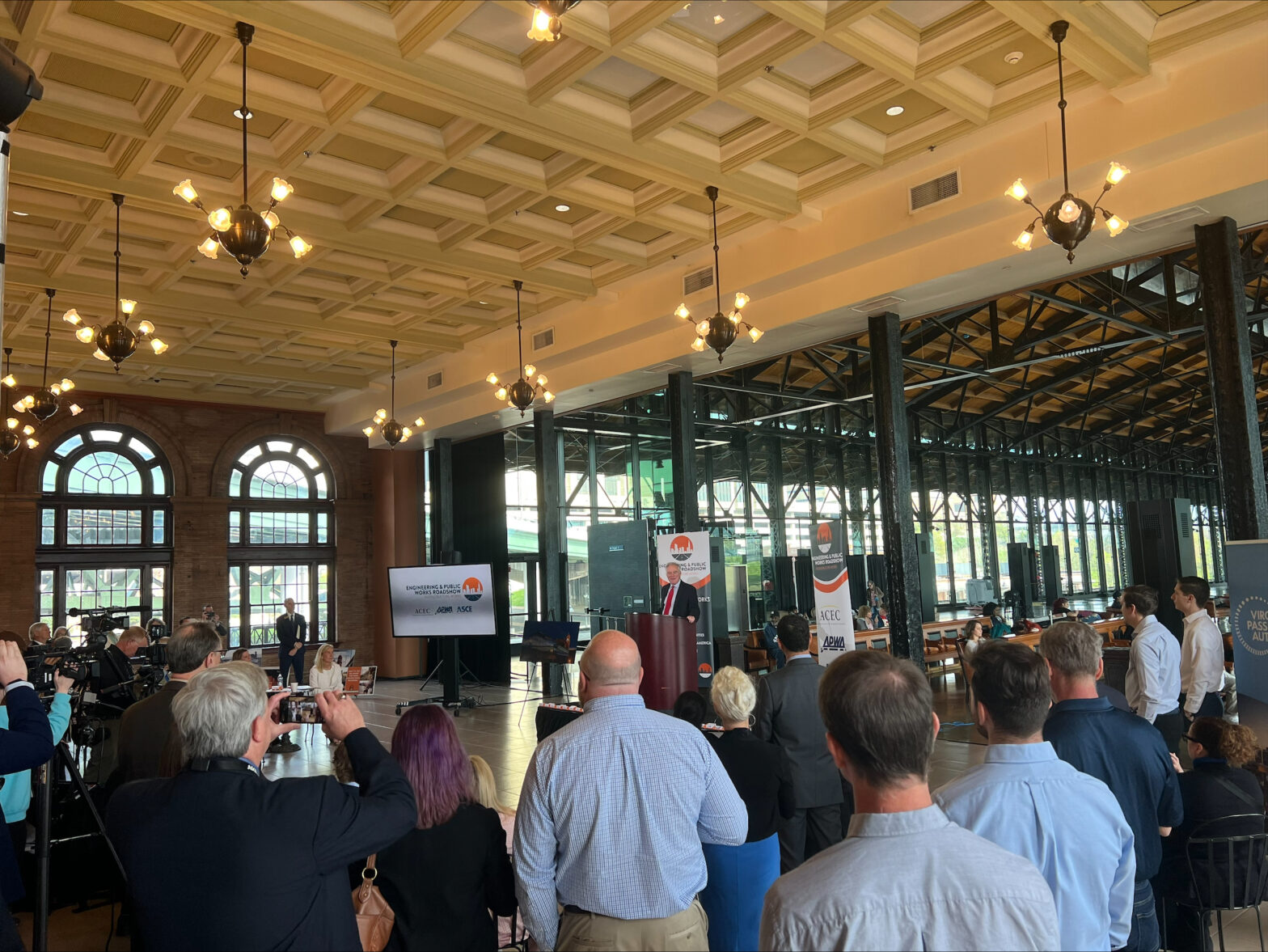March 24, 2023
Transformative Main Street Station Shed in Richmond, Va. Lauded as Shining Infrastructure Example
City, state, federal officials join the Engineering & Public Works Roadshow to highlight how public works, engineering improve communities with infrastructure investment
Richmond, VA—A 40-year phased multimodal development project that recently earned a historic preservation award today was showcased by the national Engineering and Public Works Roadshow as a great example of how infrastructure investment can improve a community and spark economic growth.
The Main Street Station Shed won an American Public Works Association project of the year award in 2022. Its rebirth brought Amtrak back to Richmond in 2003 and promises to link the most populated rail corridor in the country, the Northeast corridor, to the fastest-growing rail corridor in the country, the Southeast Rail Corridor.
The Engineering and Public Works Roadshow is the first time the leading organizations representing the designers and public operators of America’s infrastructure have joined together to shine a spotlight on what successful infrastructure investment means for the nation’s economy, jobs, the environment, and our future.
The Roadshow is a joint project of the American Council of Engineering Companies (ACEC), the American Public Works Association (APWA), and the American Society of Civil Engineers (ASCE).
At today’s press conference, U.S. Sen. Tim Kaine, Federal Railroad Administration Deputy Administrator Jennifer Mitchell, Virginia Passenger Rail Authority Executive Director DJ Stadtler, Richmond Department of Public Works Senior Project Manager Jeannie Welliver, and retired Richmond Transportation Planner Viktoria Badger participated. U.S. Sen. Tom Carper, U.S. Rep. Sam Graves, and U.S. Rep. Rick Larsen offered recorded comments.
“Not only is the Main Street Station Shed a fascinating example of the positive impact of great American infrastructure, it’s a lure for the next great generation of public works professionals and engineers,” APWA CEO Scott D. Grayson, CAE, said. “The men and women who have devoted their professional lives to this project have made a huge positive difference that will be felt by Richmonders for decades to come. This is why we need an invigorated workforce to continue these great projects throughout the country.”
“America’s engineering industry has played a critical role in every step of our nation’s rich railroading history, from the charter of the first commercial railroad in 1827, to the modern Amtrak and freight lines that run through the Richmond Main Street Station today,” said ACEC President and CEO Linda Bauer Darr. “This station is a critical economic link not only for Virginia, but the entire East Coast, enabling goods and people to move quickly and efficiently through a congested traffic corridor. This station, and the shed project we’re celebrating, could not have happened without the commitment and dedication of America’s engineers.”
“Engineers have the power to transform their communities and inspire future generations,” said ASCE Executive Director Tom Smith. “The breathtaking restoration of the Main Street Station Shed is an example of a single engineering project enhancing mobility through a rejuvenated transportation hub while also enriching the lives of Richmond residents as a beautiful event venue. America needs more creative engineers to improve our quality of life through projects like these.”
The new Long Beach International Gateway Bridge was the Roadshow’s first stop this past November. The need for more people in both professions is real. ACEC estimates 82,000 new engineers will be needed to fulfill the mandate of the Bipartisan Infrastructure Law.
Main Street Station, built in 1901, closed Oct. 15, 1975, and reopened in 1985 (following a major fire in 1983) as a mall. After the mall closed in 1986, the Commonwealth of Virginia transformed the space into offices. In 1991, Richmond received an Intermodal Surface Transportation Efficiency Act (ISTEA) grant to determine the feasibility of the current renovation project.
The 40-year effort to reimagine the train station has led to National Historic Landmark designations for the shed and headhouse. As a venue, it has been described as one of the most unique venues in the world and has its own commemorative U.S. Postal Service stamp.
As the federal government continues to implement this monumental legislation, the second year of the Bipartisan Infrastructure Law will not be fully realized without an expanded and robust workforce. It is imperative that students nationwide are educated on the rewarding careers of civil engineering and public works so that these professions have the necessary staffing to complete transformative projects.
###

